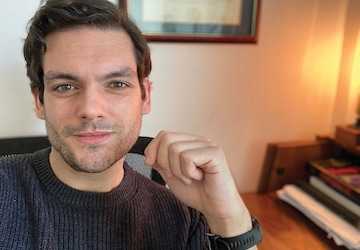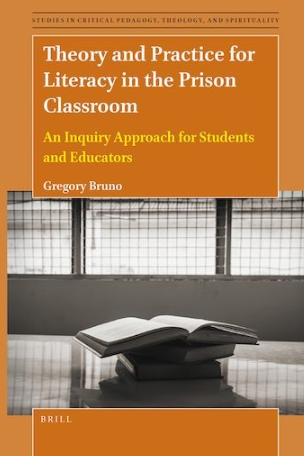Ovations

Gregory Bruno
New Book by Dr. Gregory Bruno Examines Education Behind Bars
Dr. Gregory Bruno’s newly released “Theory and Practice for Literacy in the Prison Classroom: An Inquiry Approach for Students and Educators,” published in September by Brill, examines the nuance and complexity of teaching for greater social justice under surveillance and constraint.
“Teaching in jails and prisons is unique in the sense that the environment literally constrains practice and pedagogy,” notes Bruno, a professor of English at Kingsborough Community College. “It dictates the behaviors of students and instructors alike, making context and practice become one. Of course, there are material, physical, and ideological constraints on the prison classroom that call for unique pedagogies tailored specifically for navigating the nexus of these complex and nuanced power dynamics."
Working with college-in-prison programs since 2015, much of his experience has been facilitated through the Inside-Out Prison Exchange program, which is run through Temple University in Philadelphia, where Bruno trained to teach college coursework in jails and prisons. In the Inside-Out model, “outside” students (students from the college) travel to a local jail or prison to take courses alongside “inside” (those currently incarcerated) students. Bruno and a colleague piloted a similar program between students from St. Joseph’s University and “inside” students at Suffolk County’s Riverhead Correctional Facility. Bruno has worked with the Center for the Professional Education of Teachers at Teachers College, working with instructors who taught K-12 courses at the Horizon Academy on Rikers Island.
His aim was to provide a framework by which instructors, college and prison administrators, and students might begin to process their own understanding of carceral education, particularly college in prison programs.
He questions what is meant by effective and meaningful educational opportunities in the context of carceral education. “For many, education can be a lifeline. But I wonder how we conceptualize the lifeline,” he writes. “Is education for incarcerated students ‘just’ the degree? I wonder if the socio-economic or political frame is the only frame by which we can discuss these issues. What if, for example, one is serving a life sentence without the possibility of parole? Should educational opportunities, the chance to learn and make meaning, be withheld simply because one cannot contribute to the job economy?”
Acknowledging the influence of philosophers Paulo Freire and Ernst Bloch in his thinking, Bruno writes: “The pedagogical approach to teaching in this model prioritizes dialogue, problem-posing, and the co-creation of knowledge. These are Freirean principles, so in some ways, this is not that different from my classroom practice on campus. What is different, however, is how the diversity of perspectives that come from a mixed group of students creates a unique and meaningful dynamic, especially in literacy and literature courses.”
The book invites educators to examine their values, beliefs, and practices with and about college-in-prison programming and the students those programs serve. Bruno hopes to begin a similar dialogue at KCC by serving on the steering committee for Project THRIVE. The four-part training program, scheduled to take place at Kingsborough in January, is designed to help make the College more responsive to the needs of justice-impacted individuals, including those returning from incarceration. In addition, he hopes to be involved in a Faculty Interest Group that would focus on producing meaningful and culturally competent pedagogies for justice-involved students.
NOTE: The publisher is offering those ordering the book through www.brill.com a discount of 25% through December 31, 2022 when using the code 72225.

